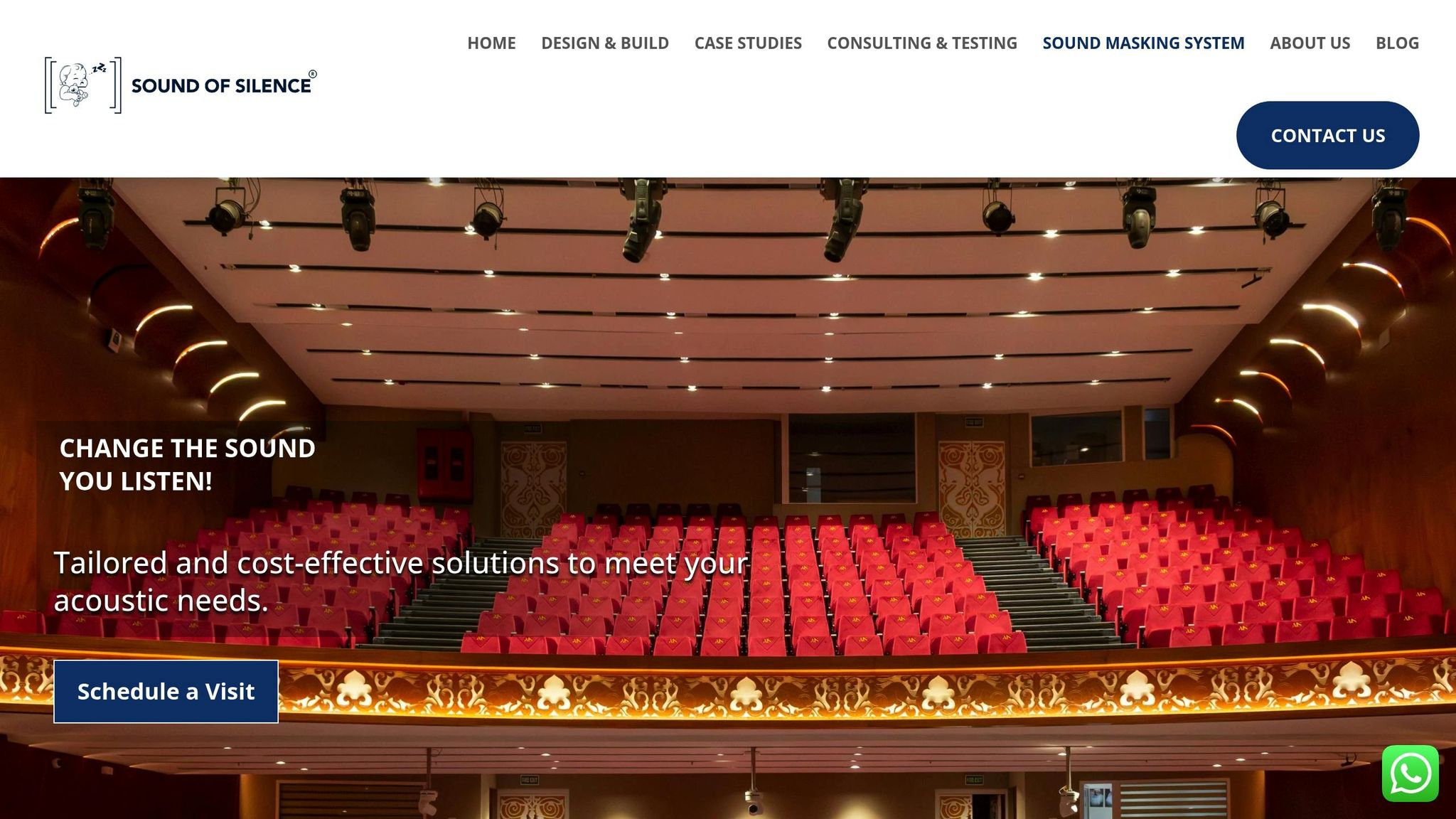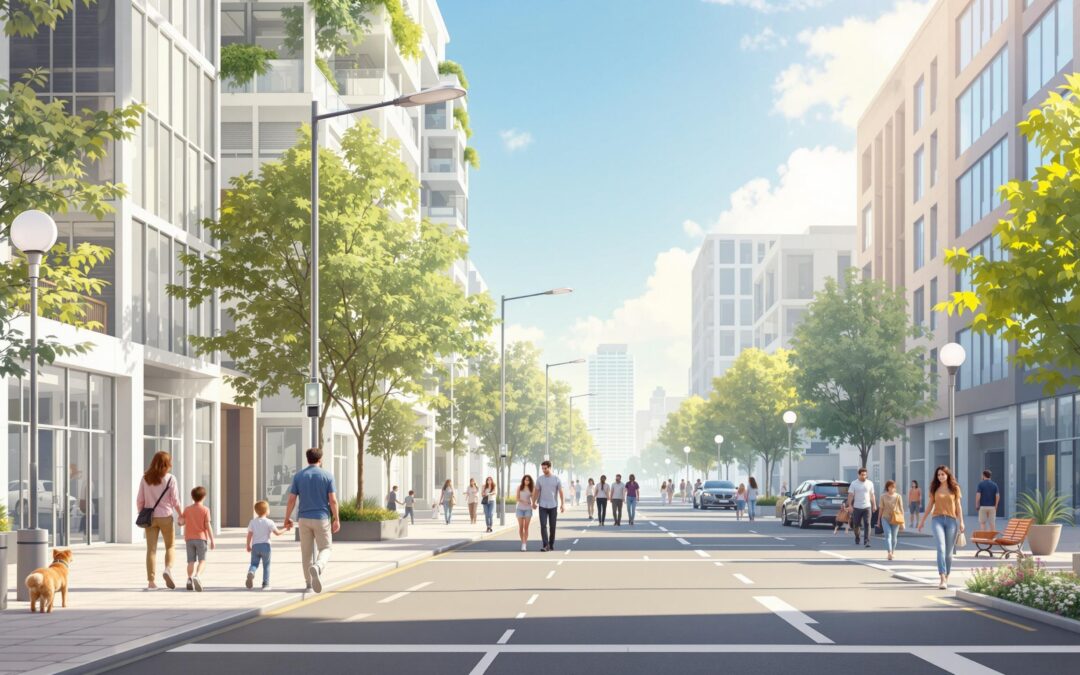Urban noise pollution is a growing problem, impacting sleep, stress, and even heart health. IoT noise sensors offer a smart solution for cities to monitor and manage noise levels in real time. Here’s what they do:
- Track Noise Data: Measure sound intensity, frequency, and source.
- Real-Time Alerts: Notify authorities when noise exceeds limits.
- Support Decision-Making: Help city planners identify noise hotspots and trends.
- Automation: Reduce the need for manual monitoring.
These sensors are equipped with acoustic microphones, processors, and connectivity (like 4G/5G) to deliver accurate data. They’re used for managing traffic noise, monitoring construction sites, and maintaining quiet public spaces. While challenges like weather effects and data handling exist, advancements in AI and sensor technology are driving improvements.
Urban Noise Monitoring and the Internet of Things
IoT Noise Sensor Technology
IoT noise sensor systems combine hardware and software to provide precise monitoring of urban noise levels. These systems play a key role in smart city noise management efforts.
Key Components of the System
Modern IoT noise sensors rely on several critical parts:
- Acoustic Sensors: Specialised microphones designed to detect sounds ranging from 30-140 dB, housed in weatherproof enclosures for outdoor use.
- Processing Unit: Microprocessors that perform real-time sound analysis.
- Network Interface: Modules for 4G/5G or Wi-Fi connectivity to transmit data.
- Power Supply: Solar panels or mains electricity with battery backups.
- Protective Housing: Enclosures with an IP66 rating to shield components from environmental factors.
These components work together to ensure continuous monitoring with a measurement accuracy of ±0.5 dB, adhering to the BS EN 61672-1:2013 standard for sound level meters.
How Noise Data Is Processed
The system processes noise data through four main stages:
1. Sound Capture
Microphones record acoustic data and sample signals at up to 48 kHz, ensuring detailed reproduction of noise levels.
2. Signal Processing
The processing unit analyses the captured data in real time, using methods such as:
- Frequency weighting (A, C, and Z curves)
- Fast and slow time weighting
- One-third octave band analysis
- Filtering out background noise
3. Data Analysis
Advanced algorithms then process the data to:
- Calculate noise metrics like LAeq, LA90, and LAFmax
- Identify specific noise sources
- Apply calibration adjustments
- Create noise level trend reports
4. Data Transmission
The processed data is sent to central servers with features like:
- Regular transmission intervals (usually every 1-5 minutes)
- Data compression to reduce size
- Error checking to ensure accuracy
- Automatic retries if transmission fails
This system provides city managers with up-to-date information, allowing them to respond quickly to noise-related issues.
City Uses for Noise Sensors
IoT noise sensors allow city authorities to monitor and manage noise pollution more effectively.
Traffic Noise Management
Managing traffic noise is crucial for maintaining a pleasant urban environment. These sensors can:
- Detect peak noise levels
- Identify noise spikes during rush hours
- Classify vehicle types using algorithms
This information helps authorities take specific actions, like adjusting traffic signals or placing noise barriers in strategic locations. Similarly, monitoring noise at construction sites ensures compliance with regulations.
Monitoring Construction Noise
Construction sites must comply with the Control of Pollution Act 1974, and noise sensors play a key role in this. They measure:
- Background noise (LA90)
- Average noise levels (LAeq)
- Maximum noise levels (LAFmax)
By tracking these metrics, construction companies can ensure their operations stay within permitted noise levels and hours. This benefits both the companies and the surrounding community by keeping noise under control.
Managing Noise in Public Spaces
Keeping public spaces quiet enough for residents to enjoy is essential. Sensors help monitor noise in areas such as:
- Parks and recreation areas: Ensuring a peaceful atmosphere
- Entertainment districts: Controlling noise from venues, especially at night
- Community spaces: Balancing sound levels during events
With sensor networks in place, authorities can quickly respond to noise complaints and use the data to guide urban planning. This approach helps maintain a balance between a vibrant city life and a peaceful living environment for residents.
sbb-itb-06ab728
Results and Limitations
Main Advantages
IoT noise sensors have shown clear benefits for managing urban noise in UK cities. Here’s how they make a difference:
-
Real-Time Monitoring and Alerts
These sensors continuously track noise levels and send alerts the moment thresholds are breached, allowing for immediate action. -
Better Decision Making
The data collected helps city planners identify noise hotspots, analyse trends, and assess how effective interventions are. -
Efficient Resource Use
Automated monitoring cuts down on the need for manual checks, saving time and making resource allocation more efficient.
Current Challenges
-
Technical Issues
To maintain accuracy, sensors need regular calibration. Urban areas with dense infrastructure can also cause signal interference, and battery life remains a concern. -
Data Overload
Handling the vast amounts of data these sensors collect can be tricky. Storage, processing speed, and system integration pose challenges, though approaches like cloud storage and edge computing are being tested to help. -
Privacy and Security Concerns
It’s crucial that these sensors only measure sound levels to stay within strict privacy and cybersecurity guidelines. -
Impact of Weather
Environmental factors like heavy rain, strong winds, and temperature changes can affect sensor performance, making regular maintenance essential.
These challenges highlight the need for ongoing improvements, which are explored further in the next section on Sound of Silence services.
Sound of Silence Services

Available Solutions
Sound of Silence offers acoustic solutions powered by IoT noise data. Their customised consulting, testing, and implementation services cater to a variety of urban settings:
- Commercial Spaces: Advanced noise control assessments tailored to business environments.
- Heritage Sites: Acoustic treatments designed to maintain historical structures.
- Recording Studios: Solutions for creating professional-grade audio environments.
- Indoor Spaces: Acoustic improvements for offices, homes, and other indoor areas.
Each solution is designed to address specific noise challenges effectively.
Noise Control Methods
Sound of Silence employs precise noise control techniques guided by IoT data:
- Sound Masking Systems: These systems create subtle background noise to reduce disruptions and improve acoustic comfort.
- Soundproofing Solutions: Customised approaches to soundproofing include:
| Setting | Soundproofing Approach | Benefits |
|---|---|---|
| Commercial | Acoustic panels and barriers | Reduces external disturbances |
| Residential | Multi-layer insulation | Lowers urban traffic noise |
| Heritage | Non-invasive treatments | Protects structural integrity |
Additionally, their expertise in vibration testing helps address issues caused by underground transport, construction, and other urban activities.
Summary and Future
Main Points
IoT noise sensors are transforming how cities manage urban noise. By identifying noise hotspots, analysing patterns, and enabling targeted actions, they provide real-time, data-based solutions that make noise control more efficient.
When paired with Sound of Silence’s acoustic solutions, these sensors offer even more precise tools for managing urban noise challenges.
Future Developments
Looking ahead, IoT noise monitoring technology is expected to make significant strides, bringing new possibilities for urban noise management:
- Advanced AI: Machine learning will improve how patterns are recognised and predicted, allowing cities to address noise issues before they escalate. Future systems might even adjust noise control measures automatically based on live data.
-
Enhanced Sensors: Upcoming sensor designs will likely feature:
- Greater sensitivity for more accurate noise measurement
- Longer battery life through better energy management
- Smaller, less noticeable designs for easier deployment
- Integration with other systems for monitoring environmental factors
- Smart Infrastructure: Noise sensors are expected to become standard in smart building designs. Working alongside other building technologies, these systems will help create quieter, more comfortable urban spaces.
As IoT noise monitoring evolves and combines with specialised acoustic solutions, it will play a key role in making cities more liveable. With growing urban populations, these advancements will be essential for ensuring acoustic comfort and improving public well-being.

